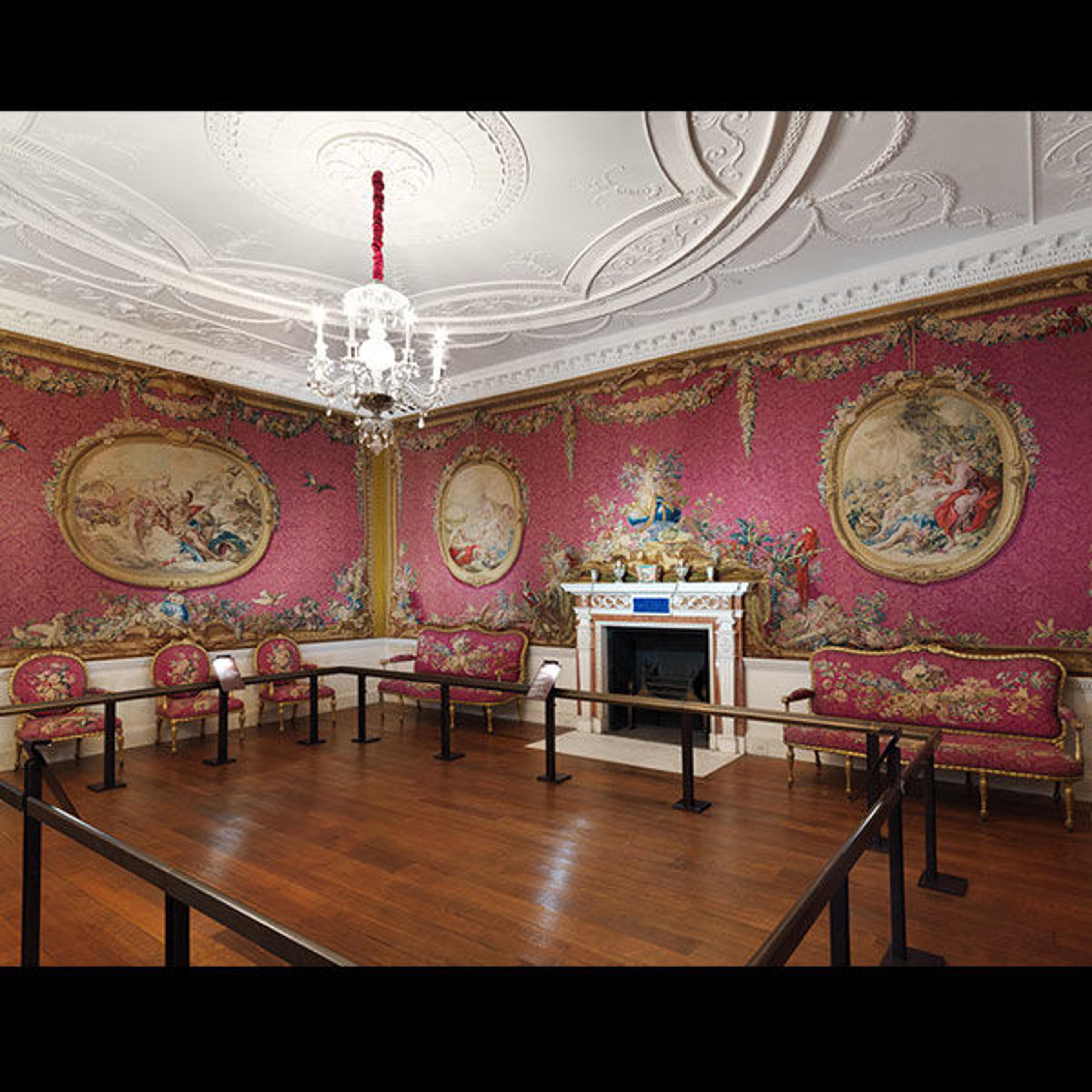Audio Guide

410. Tapestry Room from Croome Court
Gallery 514
NARRATOR: You’ve entered a room entirely brought (with its furnishings!) from Croome Court, the grand home of the Earl of Coventry. Coventry was a man of expensive, fashionable taste, as you’ll discover here. During the Seven Years War, which ended in 1763 and involved nations around the globe, Coventry was thwarted by a particular inconvenience: he couldn't travel to Paris, Europe's center of fashion. The Met's Wolf Burchard:
WOLF BURCHARD: As soon as the borders were reopened, Coventry rushed to the Gobelins tapestry manufactory, and commissioned this suite of tapestries that was partly designed by Francois Boucher, a great eighteenth-century painter whose paintings here are rendered in tapestry, in these very gutsy Rococo frames. They created this illusion that these pictures are hanging over a crimson, silk damask.
NARRATOR: Some of the most exciting details seem to be floating around the edges of the weavings.
WOLF BURCHARD: What you also have is all these trophies of fruits, and flowers, and lots, and lots of birds, beautifully rendered exotic birds. This is the height of tapestry making.
NARRATOR: This room was the pinnacle of luxury at Croome Court, designed by the most popular architect of the day, Robert Adam. Coventry wanted Adam for his reputation to deliver a cohesive harmony among all design elements, from the furniture to the wall and ceiling decorations.
WOLF BURCHARD: If you look along the walls, you have this wonderful suite of furniture that has tapestry covers that match the tapestries on the walls… They just had the covers shipped, and asked one of the best furniture makers, the firm of Mayhew and Ince, to produce the sofas and chairs, to match the covers.
NARRATOR: Coventry was a representative of the House of Commons and hosted his colleagues and members of the royal family here, including King George III, with whom he needed to reconcile. Coventry had resigned because of his opposition to Britain’s fighting what he considered the too-costly American Revolutionary war.
The wall hangings of this room were considered so elegant, that even the King could not
dine among them. Why? The odors of the food might cling to the textiles. Another guest took note of the incident:
RICHARD COOKSEY: Dinner was served in the salon… the king at first wished to dine in the tapestry room but altered his choice.
NARRATOR: One last thing about the ornamentation along the edges of the tapestries: Customers were able to request and pay by the number of details—each one coming at an additional cost.
WOLF BURCHARD: Not only could you supply the measures of your room, you could actually ask to have many more flowers, or many more birds.